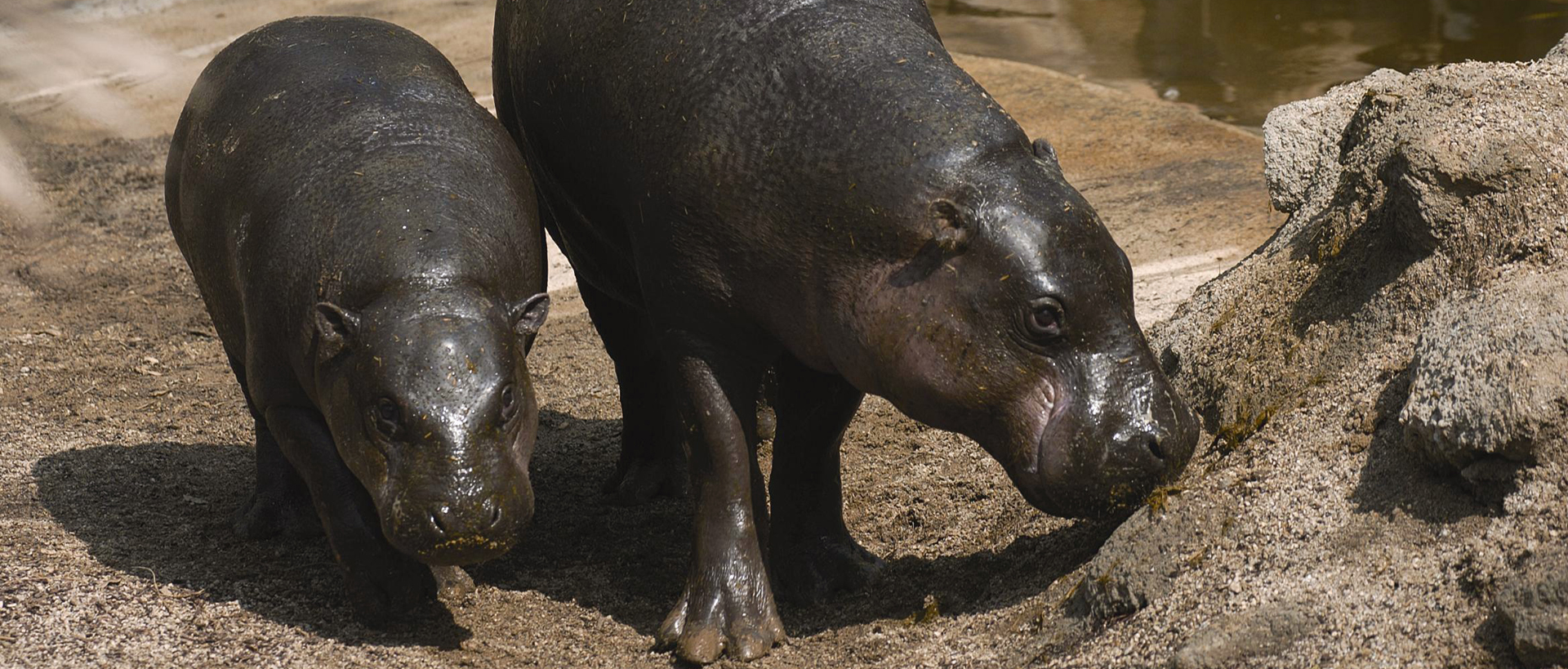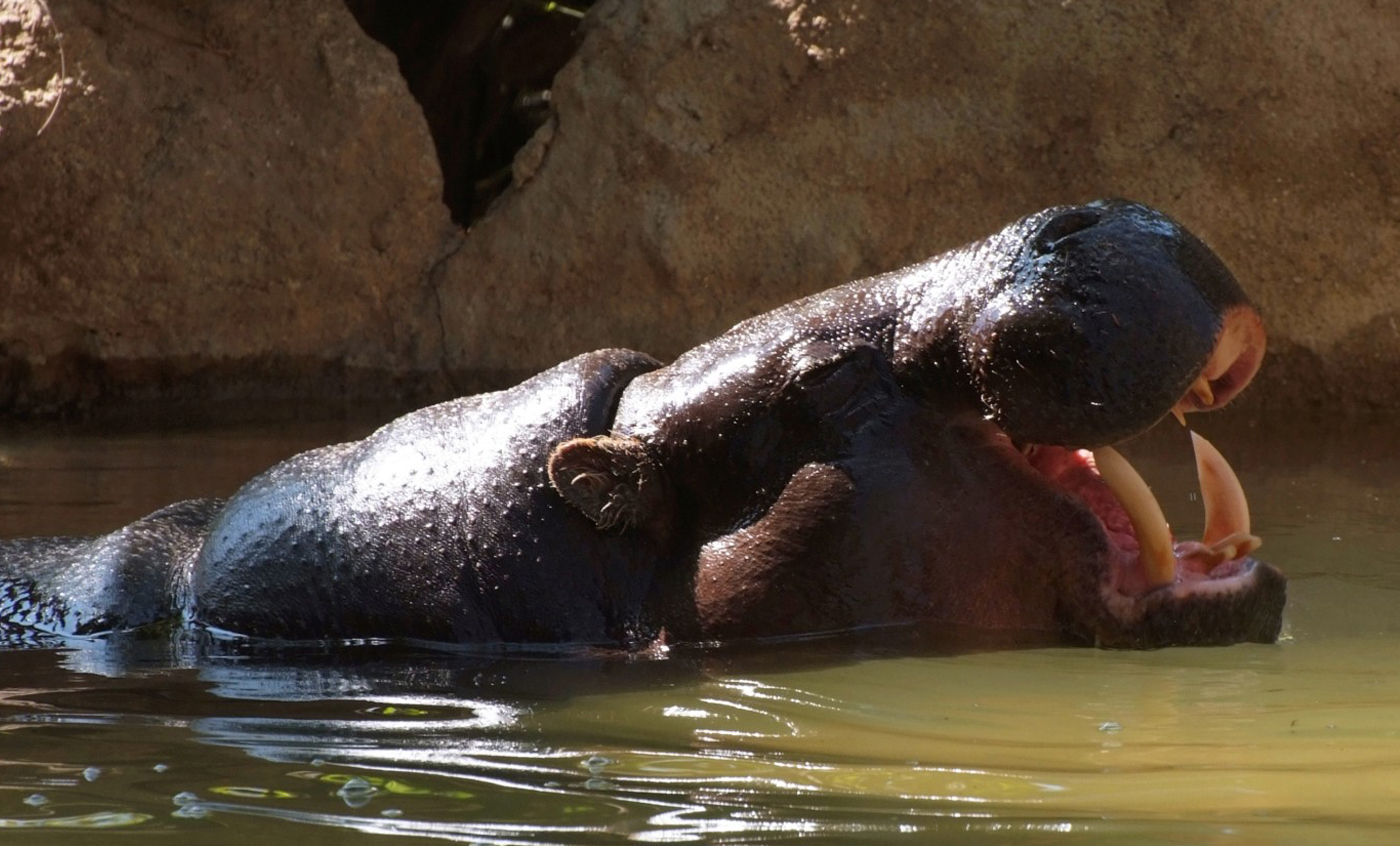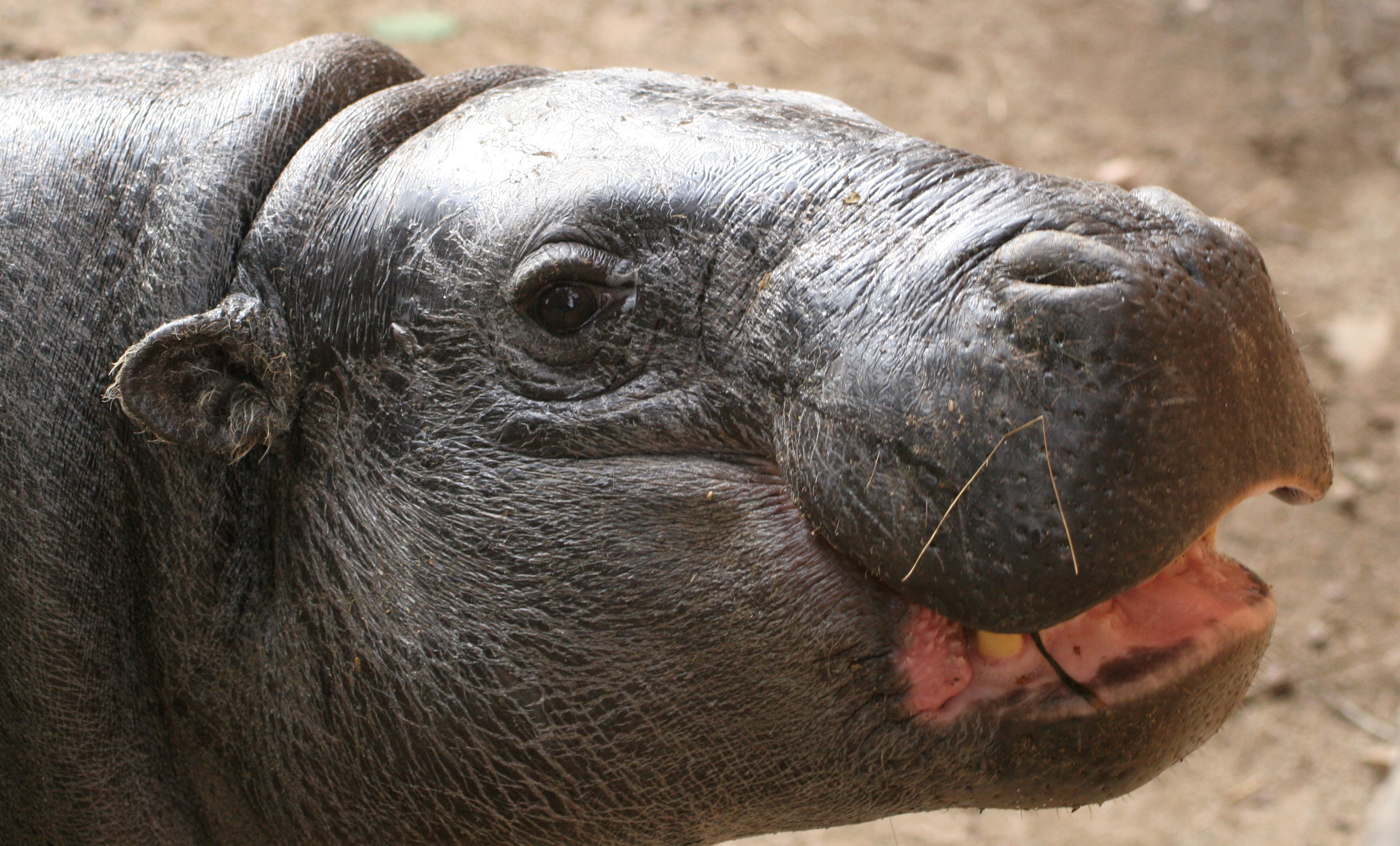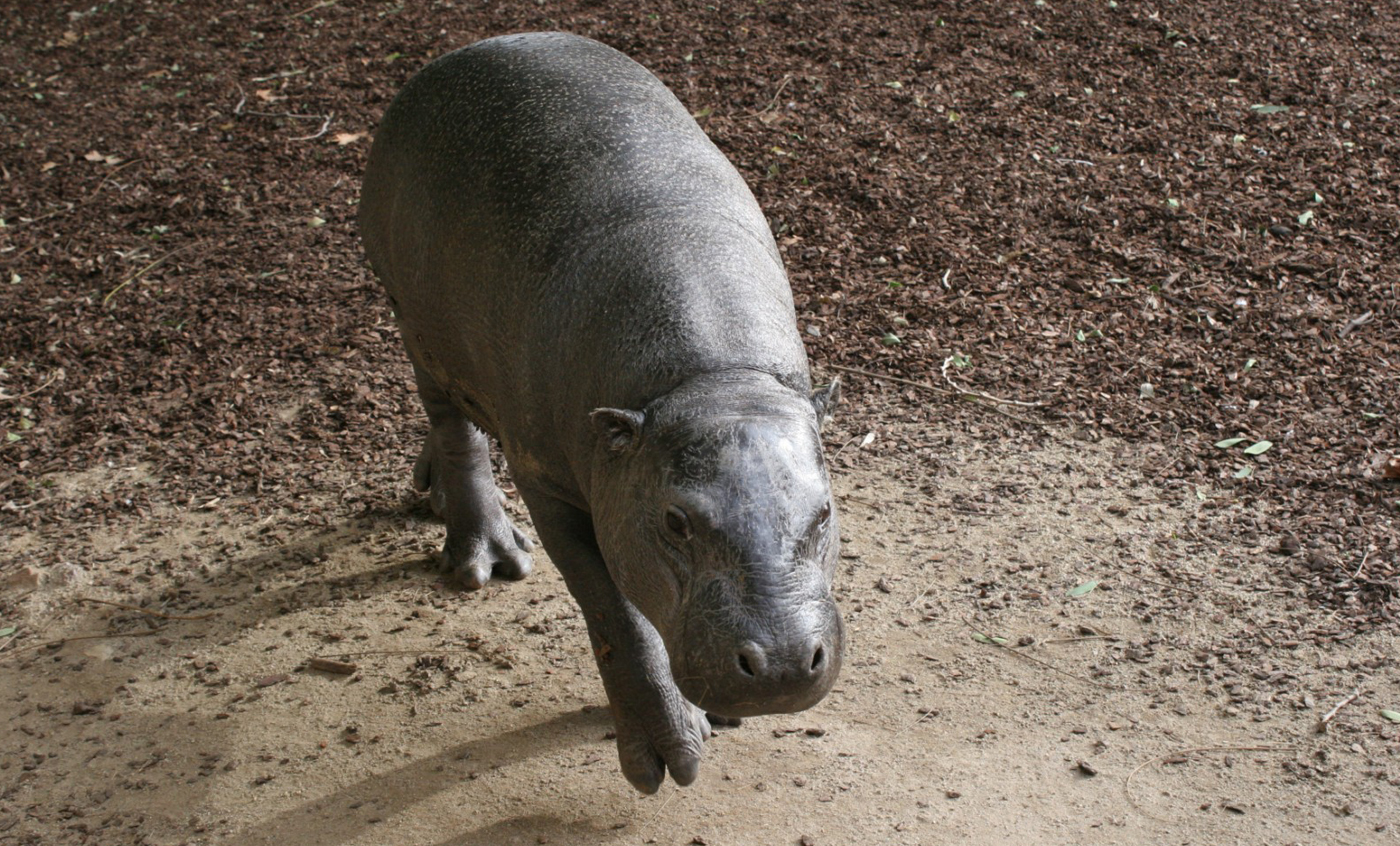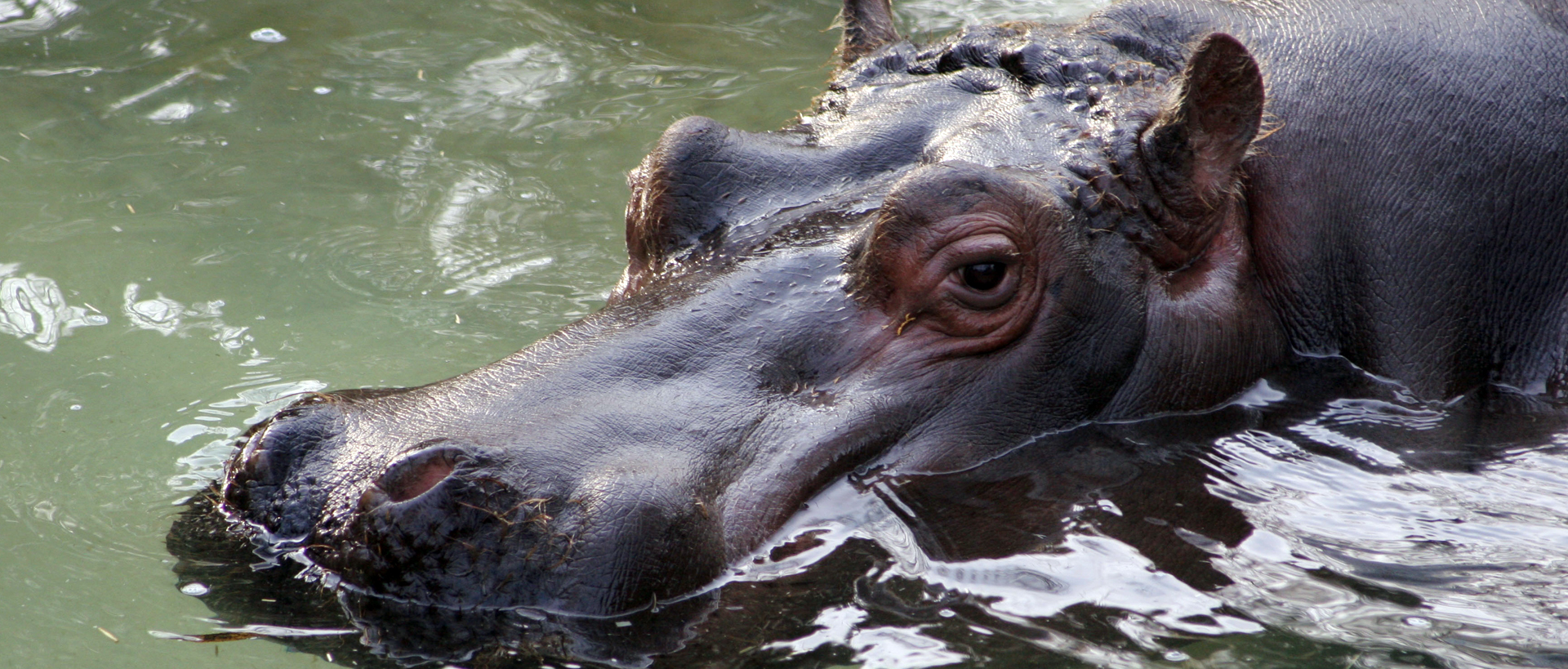Pygmy hippopotamus
The pygmy hippopotamus inhabits the swamp forests of West Africa, where it lives alone, in couples or small family groups.
It shows the same adaptations to water as the common hippopotamus -nostrils, eyes and ears in the upper part of the head, so they remain in the surface when the rest of the body is underwater- although its habits are much more terrestrial.
Breeding program
Natural habit
Ivory Coast, Sierra Leone, Liberia and Guinea. Seems to be extinct in Nigeria.
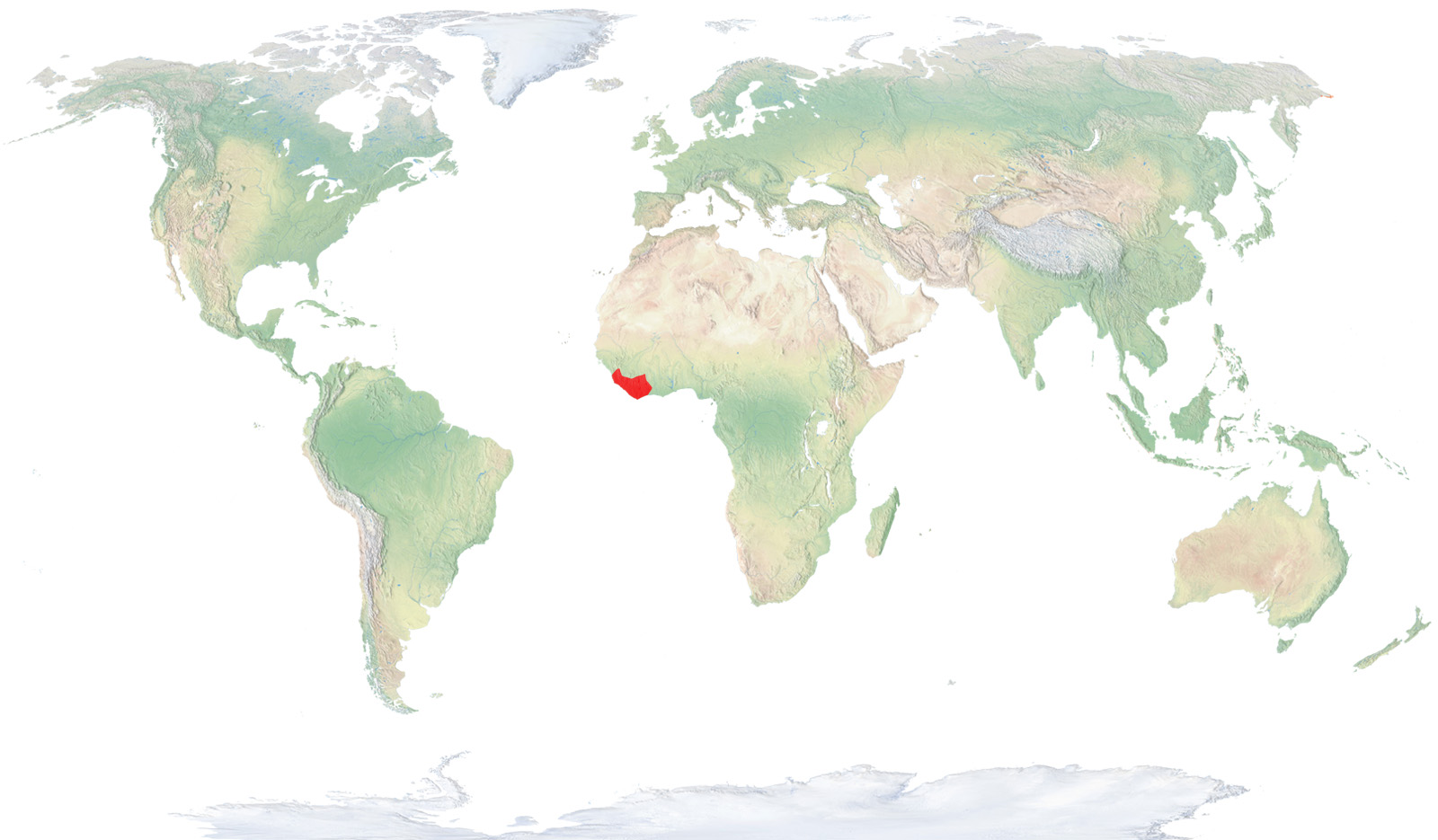
- Distribution / Resident
- Breeding
- Wintering
- Subspecies
Risk level
- Extint
- Extint in the wild
- Critically endangered
- In Danger
- Vulnerable
- Near threatened
- Minor concern
- Insufficient data
- Not evaluated
Taxonomy
Physical characteristics
Biology
Reproduction
Biology
The pygmy hippo, rarely weighting more than 250 kg, is not much larger than a domestic pig. It is adapted to amphibian life, as well as its larger relative, the common hippopotamus, although its habits are much more terrestrial. Thus, its ears, eyes and nostrils are located in the upper part of the head, so when it emerges slightly from the water, the rest of the body is underwater.
Small rivers, ravines and inner streams of the rainforests of the plains in West Africa.
It is an herbivore that does not eat significant amounts of aquatic plants and rarely eat grass, as it is scarcely found in the dense forests they often inhabit, and usually eat leaves, roots, ferns, tubers and fallen fruits. As in common hippopotamus, pygmy hippos leave the water at dusk in order to feed.
The single calf, or more rarely two, is born after six months of gestation. While common hippos only give birth and mate in the water, pygmy hippopotamus mate and give birth either in the water or on land. Pygmy hippo calves can swim almost immediately after they are born and stay with their mother for 3 years. They reach their sexual maturity after 3 or 5 years and, under captivity, they live for more than 40 years.
The behaviour of the pygmy hippopotamus differs in many aspects to common hippo’s. While common hippopotamus are gregarious, pygmy hippos live alone or in small family groups, formed by a couple of adults or a mother and its calf. In their encounters with others, pygmy hippos tend to ignore themselves, rather than fight for females or territory.
Pygmy hippopotamus spends most of the day hidden in rivers, only leaving at night to feed, taking advantage of paths opened by other animals, to move along the dense vegetation of the forests.
This species is currently under great endangerment, because of direct hunting by human beings and, mostly, due to the loss of its habitat, caused by deforestation and degradation of rainforests and forests
The Zoo of Barcelona takes part in the EEP of this species.



